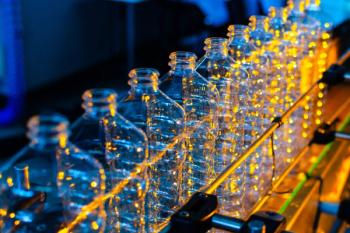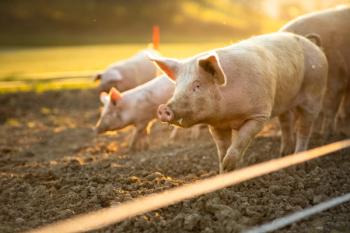
Best of the Week: Pharmaceutical Eye Drops, Chemometric Calibrations, Emerging Leader in Molecular Spectroscopy
Top articles published this week include a peer-reviewed article that discuss two multivariate calibration algorithms for the spectrophotometric analysis of a drug containing antazoline hydrochloride (AN) and naphazoline hydrochloride (NP), an article about chemometric calibrations, and a feature about the 2024 Emerging Leader in Molecular Spectroscopy awardee.
This week, Spectroscopy published various articles that covered many topics in analytical spectroscopy. This week’s articles introduce some of the main pieces and columns in the Spectroscopy October issue. Much attention is given to chemometrics and inductively coupled plasma–mass spectrometry (ICP-MS). Below, we’ve highlighted some of the most popular articles, according to our readers and subscribers. Happy reading!
The article compares two multivariate calibration algorithms, principal component regression (PCR) and partial least squares (PLS), for the spectrophotometric analysis of a drug containing antazoline hydrochloride (AN) and naphazoline hydrochloride (NP). Absorbance data was collected between 200–400 nm, and synthetic solutions of varying AN and NP concentrations were used to validate the prediction accuracy (1). Both methods showed high accuracy, with recovery rates over 100% (1). No interferences from excipients were observed, and the results closely matched those obtained using high performance liquid chromatography (HPLC), demonstrating the effectiveness of PCR and PLS in drug analysis without chemical separation.
In this “Chemometrics in Spectroscopy” column, Howard Mark and Jerome Workman, Jr. continue their exploration of less common algorithms and data transforms in spectroscopy, building on the previous column's discussion (2). It highlights algorithms proposed in the literature but rarely applied in practice. These include methods for both continuous and discrete spectra (2). The prior column covered calibration techniques such as classical least squares, Karl Norris' derivative-ratio technique, and David Haaland's post-calibration augmented-components technology. This follow-up aims to further explain and discuss underutilized algorithms that can enhance spectral analysis, broadening the understanding of potential tools beyond mainstream applications (2).
Joseph P. Smith, Director of Data Rich Experimentation at Merck & Co., is the recipient of the 2024 Emerging Leader in Molecular Spectroscopy Award. Smith's research significantly impacts pharmaceutical process development, utilizing a variety of spectroscopic techniques like Raman, FT-IR, UV-vis, and fluorescence (3). His work spans biocatalysis, protein engineering, vaccine production, and advanced data analysis, including machine learning and chemometrics (3). Smith’s contributions to process analytical technology (PAT) and in situ analysis have made him a leader in the field (3). He will receive the award at SciX 2024 (October 20 to 25) in Raleigh, North Carolina.
This “Atomic Perspectives” column introduces a gas exchange device (GED) used in conjunction with inductively coupled plasma–mass spectrometry (GED–ICP-MS) to monitor organometallic compounds and metallic particles in specialty gases (4). The GED–ICP-MS workflow eliminates the need for offline sample preparation, enabling real-time monitoring of metallic impurities (4). It is ideal for detecting impurities in specialty gases at various stages, including delivery, distribution, and point of use, improving efficiency and precision in monitoring process chemicals.
Handheld instrumentation allows for on-site analysis without transporting samples to a laboratory, helping to reduce the cost and time of forensic investigations (5).
References
- Obeidat, S. M.; Al Momani, I. F. Spectrophotometric and Chemometric Methods for Simultaneous Determination of Antazoline and Naphazoline in Pharmaceutical Eye Drops. Spectroscopy. Available at:
https://www.spectroscopyonline.com/view/spectrophotometric-and-chemometric-methods-for-simultaneous-determination-of-antazoline-and-naphazoline-in-pharmaceutical-eye-drops (accessed 2024-10-10). - Mark, H.; Workman, Jr., J. Data Transforms in Chemometric Calibrations Part 4B: Continuation of the Discussion of Data Transforms for Continuous-Wavelength Spectra as well as Discrete-Wavelength Models. Spectroscopy 2024, 39 (7), 14–19. DOI:
10.56530/spectroscopy.hu8490r6 - Workman, Jr., J. The 2024 Emerging Leader in Molecular Spectroscopy Award. Spectroscopy 2024, 39 (7), 34–37,39.
https://www.spectroscopyonline.com/view/the-2024-emerging-leader-in-molecular-spectroscopy-award - Stephan, C.; Hineman, A.; Merrifield, R. Analysis of Organometallic Compounds and Metallic Particles in Specialty Gases by Direct Injection Using Gas Exchange Device (GED) Coupled to Inductively Coupled Plasma–Mass Spectrometry (ICP-MS). Spectroscopy 2024, 39 (7), 8–13. DOI:
10.56530/spectroscopy.qi8877e9 - Wetzel, W. Portable Spectroscopy and Forensic Analysis: Trends and Emerging Technologies. Spectroscopy. Available at:
https://www.spectroscopyonline.com/view/portable-spectroscopy-and-forensic-analysis-trends-and-emerging-technologies (accessed 2024-10-10).
Newsletter
Get essential updates on the latest spectroscopy technologies, regulatory standards, and best practices—subscribe today to Spectroscopy.




